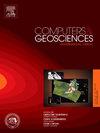Efficient image inpainting of microresistivity logs: A DDPM-based pseudo-labeling approach with FPEM-GAN
IF 4.2
2区 地球科学
Q1 COMPUTER SCIENCE, INTERDISCIPLINARY APPLICATIONS
引用次数: 0
Abstract
In geophysical exploration, logging images are frequently incomplete due to the mismatch between the size of the logging instruments and that of the boreholes, which significantly impacts geological analysis. Existing methods, which rely on standard algorithms or unsupervised learning techniques, tend to be computationally intensive and time-consuming. In addition, they are difficult to inpaint regions with high-angle fractures or fine-grained textures. To address these challenges, we propose a deep learning approach for inpainting stratigraphic features. Our method utilizes pseudo-labeled training datasets to alleviate the issue of limited training labels, thereby reducing both computational cost and processing time. We introduce a Fusion-Perspective-Enhancement Module (FPEM) designed to accurately infer missing regions based on contextual guidance, thus enhancing the inpainting process for high-angle fractures. Furthermore, we present a novel discriminator known as SM-Unet, which improves fine-grained textures by adjusting the weight assigned to various regions through soft labeling during training. Our approach achieves a Peak Signal-to-Noise Ratio (PSNR) of 25.35 and a Structural Similarity Index (SSIM) of 0.901 on the logging image dataset. This performance surpasses that of state-of-the-art methods — particularly in managing high-angle fractures and fine-grained textures — while requiring less computational effort.
求助全文
约1分钟内获得全文
求助全文
来源期刊

Computers & Geosciences
地学-地球科学综合
CiteScore
9.30
自引率
6.80%
发文量
164
审稿时长
3.4 months
期刊介绍:
Computers & Geosciences publishes high impact, original research at the interface between Computer Sciences and Geosciences. Publications should apply modern computer science paradigms, whether computational or informatics-based, to address problems in the geosciences.
 求助内容:
求助内容: 应助结果提醒方式:
应助结果提醒方式:


